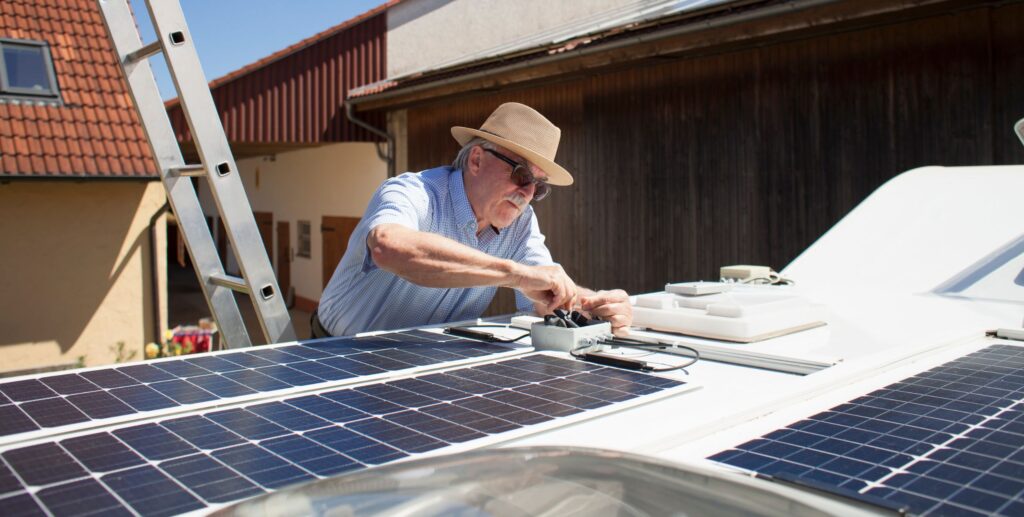Before you head out on your van life adventure, you need to make sure your vehicle is up to snuff. The importance of a decent camper van electrical system is second only to your engine and your tires. Without a solid van electrical system, you’ll have no light, no heat, no hot water, no power for your devices and appliances, no internet…in short, you will be a very unhappy camper!
In this article, we’ll take a look at both portable and permanent options for powering your camper van, and discuss the pros and cons of each setup. We’ll also talk about sustainability and why it’s important to opt for sustainable methods when it comes to powering your camper van electrics.
Table of Contents
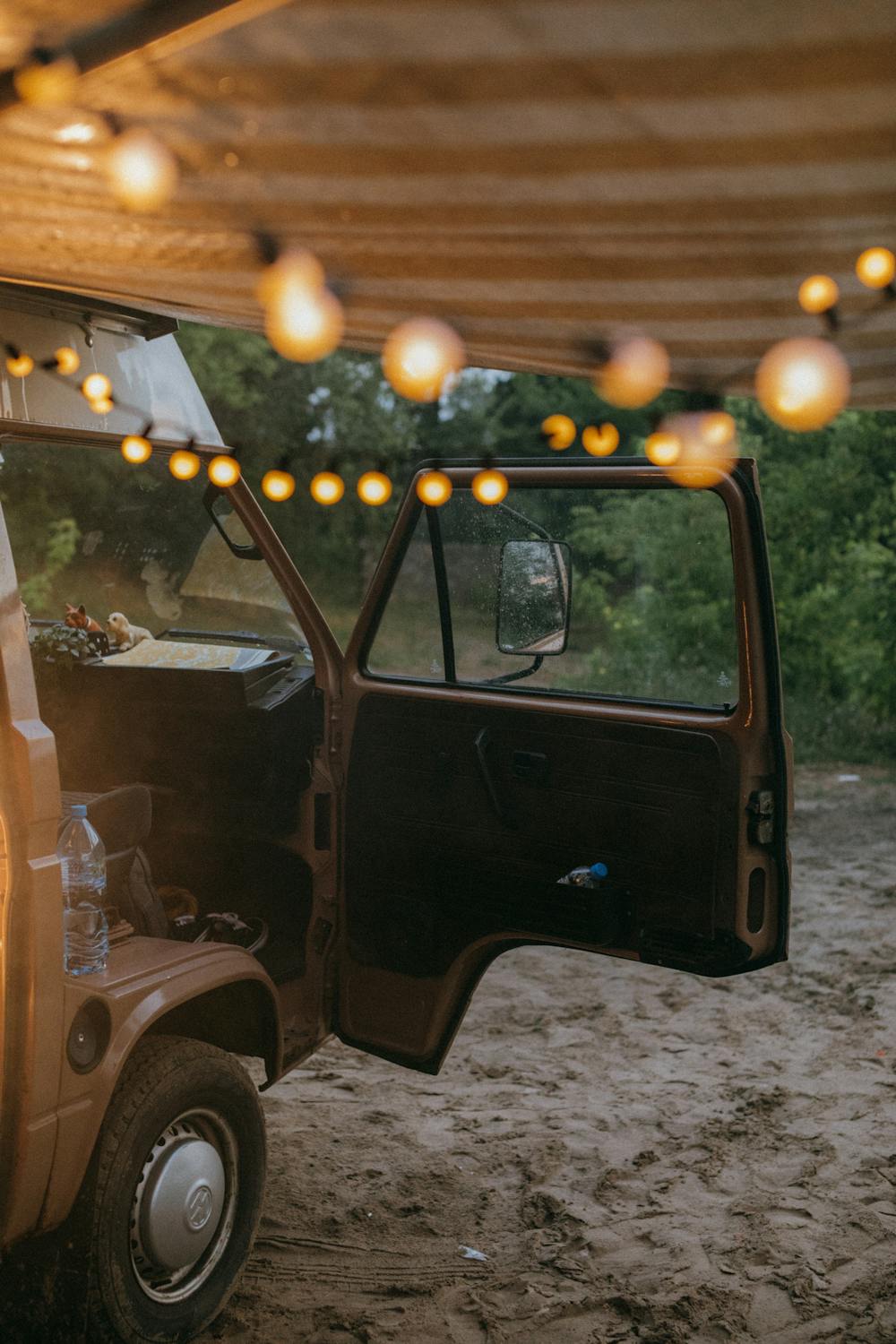
Portable Solar Panels and Power Stations
Most van life setups rely on solar power in some capacity. Even if you don’t spend a lot of time off-grid and can plug into shore power regularly, solar panels are a great backup system. And for those who want to spend a lot of time in remote areas, they are a must.
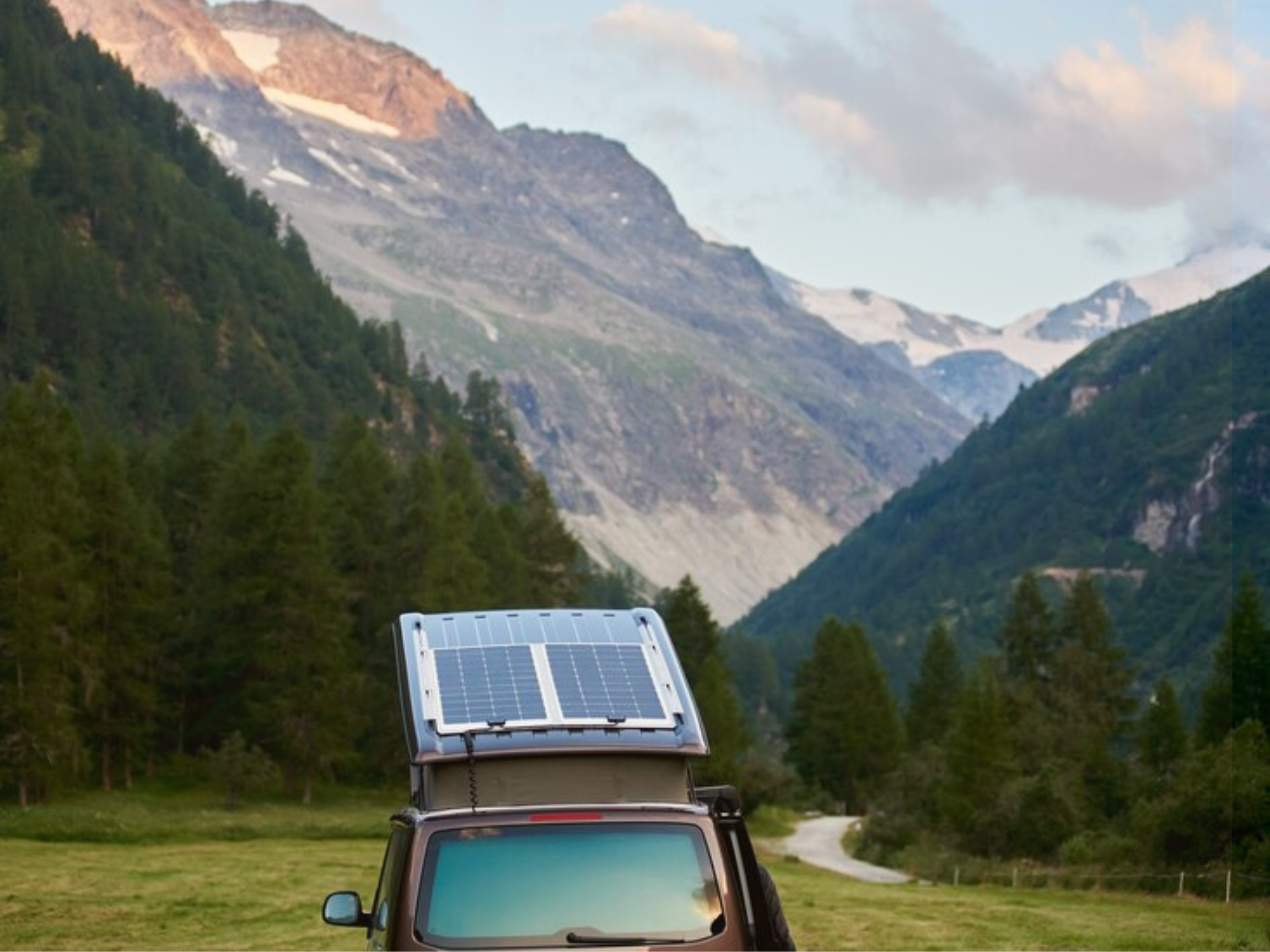
Portable Solar Panels
If you don’t plan to rely on solar completely, you might consider getting a portable solar panel system to set up only on those occasions that you need it (for example, boondocking in the desert.)
How They Work
There are many types of portable solar panels, from rigid panels with a kickstand that need to be connected to an inverter and charge controller to small foldable panels that produce just 5-20 watts and can be plugged directly into a device via USB.
In general, solar panels are made of an array of silicon cells that harness the sun’s rays. Positive and negative layers of these cells create an electric field. The electricity (DC) is channeled through a charge controller into a battery. Finally, an inverter changes DC power into AC power that can be used to power appliances and charge your electronic devices.
Benefits of Portability
Portable solar panels are a nice addition to your camper van electrical system, regardless of whether you also have a permanent solar setup. Small portable panels can be taken with you on hiking excursions and can be used to charge small devices and take some of the load off the main grid.
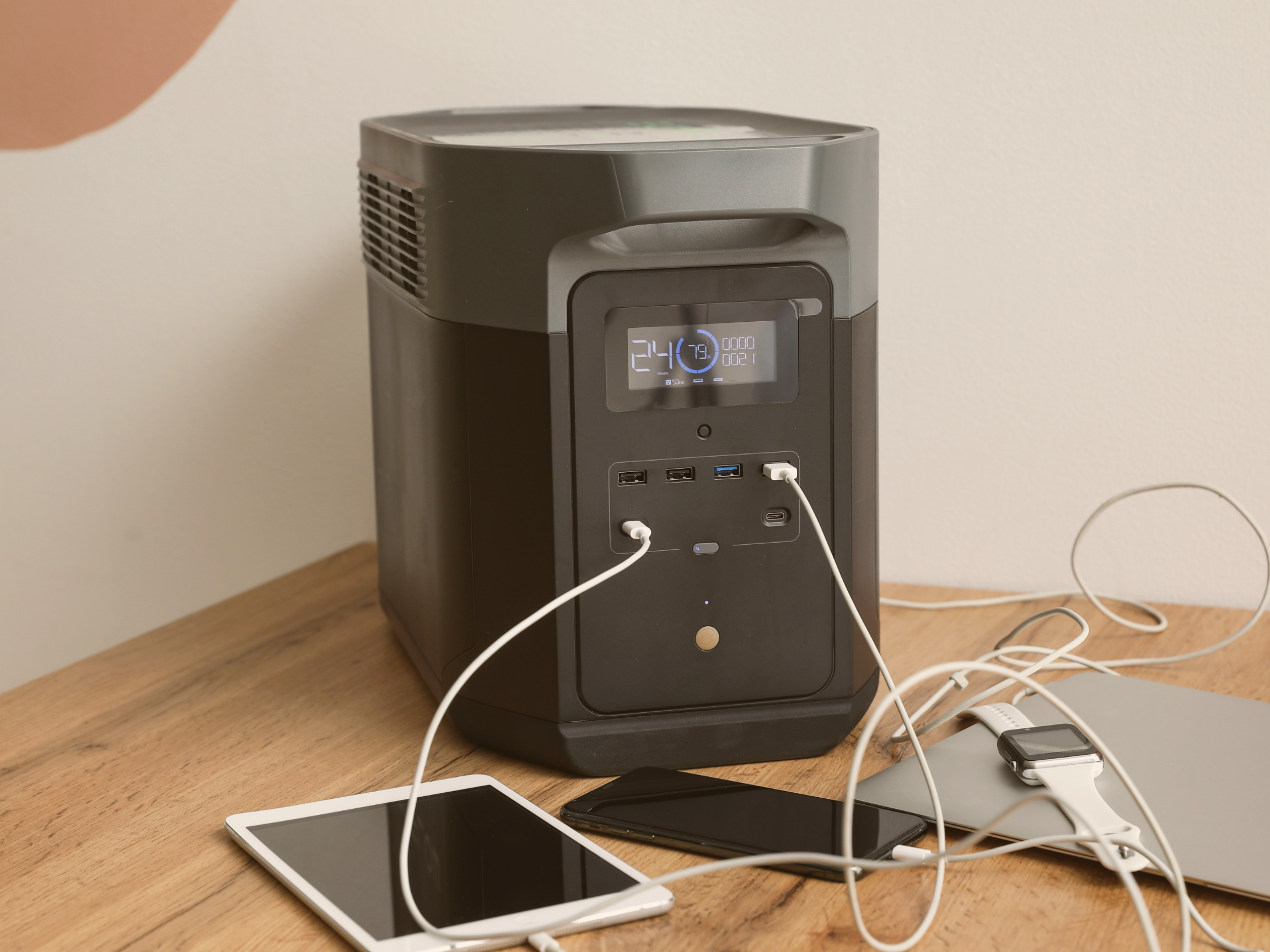
Portable Power Stations
A portable power station provides off-grid electricity via a rechargeable battery. A power station doesn’t create energy on its own – it is dependent on solar or some other power supply. The station stores the power generated and makes it accessible to you.
Advantages of Power Stations
A power station is more than a battery – it also converts power from DC to AC and provides AC and USB outlets that you can plug directly into. A power station is also different from a battery charger or a power bank. Power stations usually have more battery capacity and higher output than power banks, which typically only provide USB outlets for charging.
Setting Up and Using Portable Solar Panels and Power Stations
When getting your solar panels wired to your power station, there are a few things you should keep in mind.
Solar Panel Placement and Orientation
In general, you want your panels in direct sunlight for as long as possible. The great thing about portable panels is that you can move and adjust them throughout the day to capture as much energy as possible.

Choosing the right power station for your needs
The three main things you want to think about when choosing a power station are portability, capacity, and longevity. How much battery capacity you need will depend on how much battery power you need. This will depend on your unique situation.
Typically, the more portable a station is, the lower its capacity will be. However, these days, with the advent of lithium batteries, the tradeoff has become less pronounced. With lithium batteries, you get double the battery capacity in the same amount of space compared to AGM batteries (lead acid.)
When it comes to longevity, you need to look at the life cycle. This will be stated as something like “500 cycles to 80% capacity.” That means that you can recharge the battery 500 times before its capacity will be reduced to 80%.
At 80% capacity, you can continue to use the battery, you just won’t get as much power from it. For example, a battery that is used to power AC appliances for 100 hours will only power them for 80 hours at 80% capacity.
Maintenance and care
Batteries require some maintenance. Lead acid batteries shouldn’t be drained below 50% capacity and ideally should be recharged after every use to prevent sulfation. Lithium-ion batteries are not so finicky. You can drain them all the way down and leave them without worrying about damaging the battery.

Fully Wired Electrical System with In-House Batteries
For a more permanent setup, you need a fully wired campervan electrical system with permanent solar panels, a solar charge controller, battery bank, battery monitor, and an inverter. Let’s take a look at how this is set up.
Components of a Wired Electrical System
In-House Batteries
Your house batteries are the batteries that provide electricity for your appliances, devices, etc. The number of batteries you need will depend on how much power you use, but ideally, you should carry as many batteries as you can reasonably fit.
Starter Battery
Your starter battery is the car battery that starts the vehicle’s motor, and it operates separately from the house bank.
Solar Panels
There are four major types of permanent solar panels: monocrystalline, polycrystalline, PERC, and thin-film. If you plan to mount solar panels to the roof of your van, we recommend rigid monocrystalline panels. They are the most efficient and most readily available type of panel. Polycrystalline panels are cheaper, but less efficient and don’t last as long.
You can get either rigid or flexible panels. Flexible panels give you more freedom when it comes to installation, but some brands don’t last as long and are more expensive. One thing to keep in mind is that if you plan to do a lot of urban stealth camping, flexible panels have a lower profile and will let you fly under the radar better than rigid panels.
You can buy solar panel kits designed specifically for camper van electrical systems that can take some of the headache out of figuring out how many and what type of panels you need.
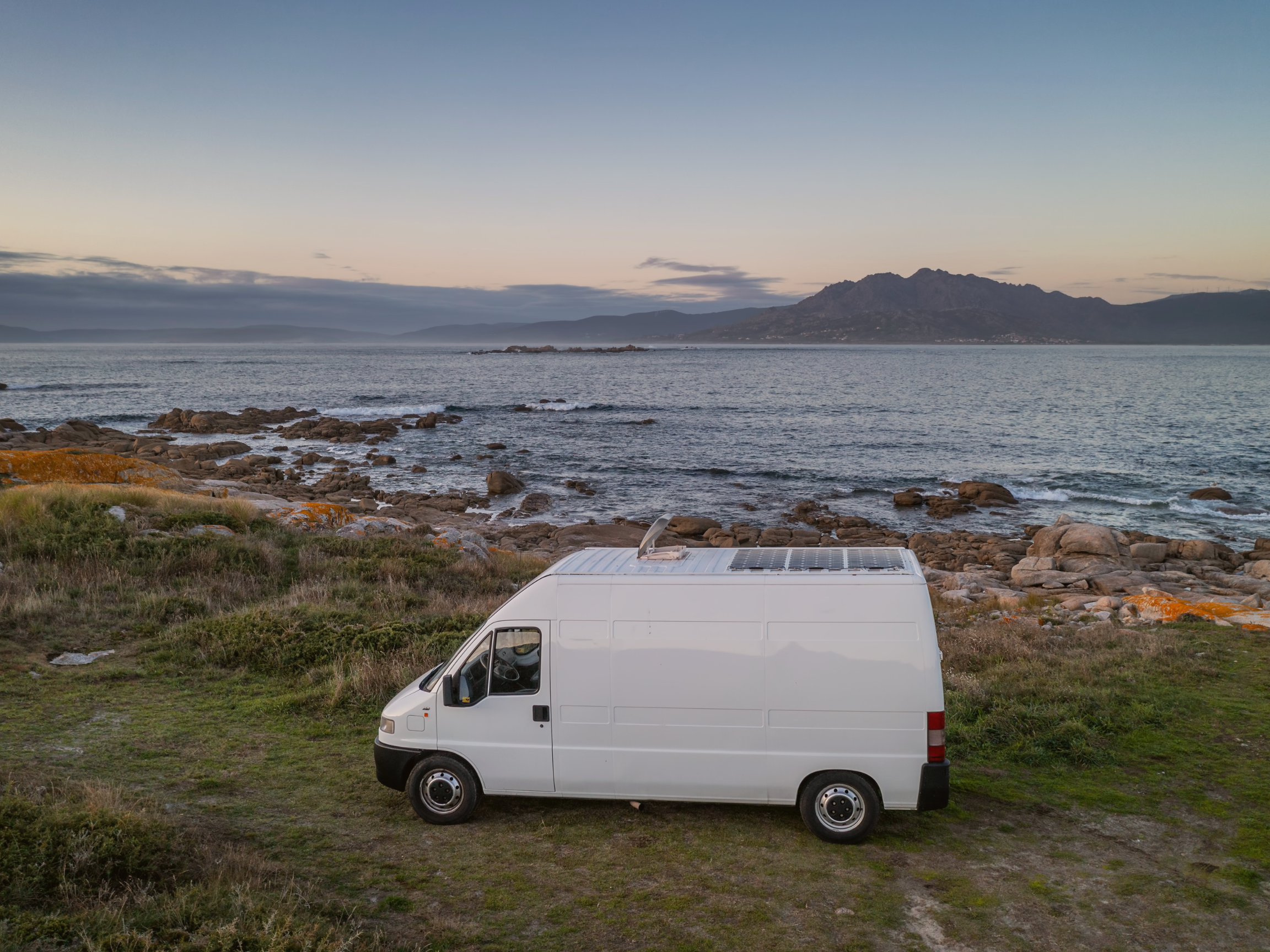
MPPTs and PWMs (Charge Controllers)
A solar charger controller converts the electricity output by solar panels into the correct voltage for the batteries. Most solar panels put out between 20-40 volts, but batteries must be charged at 12 volts.
There are two types of charge controllers: MPPT and PWM. MPPT controllers are more efficient, outputting more power in a shorter time. PWMs are still a reliable type of solar charge controller, but these days, they are used less frequently.
Alternator Charger
Alternator charging is another method of topping up your house batteries when solar isn’t available. It means using your camper’s engine as a battery charger. Typically, you would do this while driving, but you can run the engine anytime to top up the battery bank as needed.
For this, you will need an externally regulated alternator that can output the correct voltage to charge the batteries.
Power Inverter
The last piece of this puzzle is the inverter, which converts 12v DC current to 120v AC current and outputs the energy to your van’s AC power system (meaning wall outlets.) This allows you to plug in devices like blenders and instant pots.
The bigger your inverter, the more watts you’ll get. Most van lifers opt for a 3000w inverter, which will allow you to power most home appliances. However, if you don’t have the battery capacity to sustain the power draw, you will kill your house battery bank quickly.

Advantages of a Fully Wired System
If you don’t spend a lot of time off-grid and can plug into shore power regularly, you may be able to get away without a fully-wired campervan electrical system. However, if you want to spend time in remote places, your camper’s electrical system needs to be able to power all the electrical devices you use regularly.
Installation
When it comes to installation, the main thing you’ll want to consider is whether you’d prefer to install the system yourself or hire a professional.
DIY
It is absolutely possible (and not too difficult) to learn how to DIY your camper van electrical system, and the benefits of doing so are numerous. You’ll understand the system, know every part of it, and be able to fix it when it goes wrong. As a camper van owner, you may take pride in knowing every part of your van.
For those who plan to live in their van full time, doing as many things yourself as possible is a good idea. However, for those who only use their vans occasionally and who want to spend as much time as possible relaxing in them, learning how to do things yourself might be a headache and a time investment you don’t want to make.
Hiring a Pro
The benefit of hiring a professional is that you can be reasonably sure they will do the installation correctly (although there are no guarantees) and that they can help you figure out your power draw and exact needs.
Even if you plan to DIY your install, it may be beneficial to hire someone with experience in van electrical systems to help you. An incorrectly wired electrical system can be very dangerous.
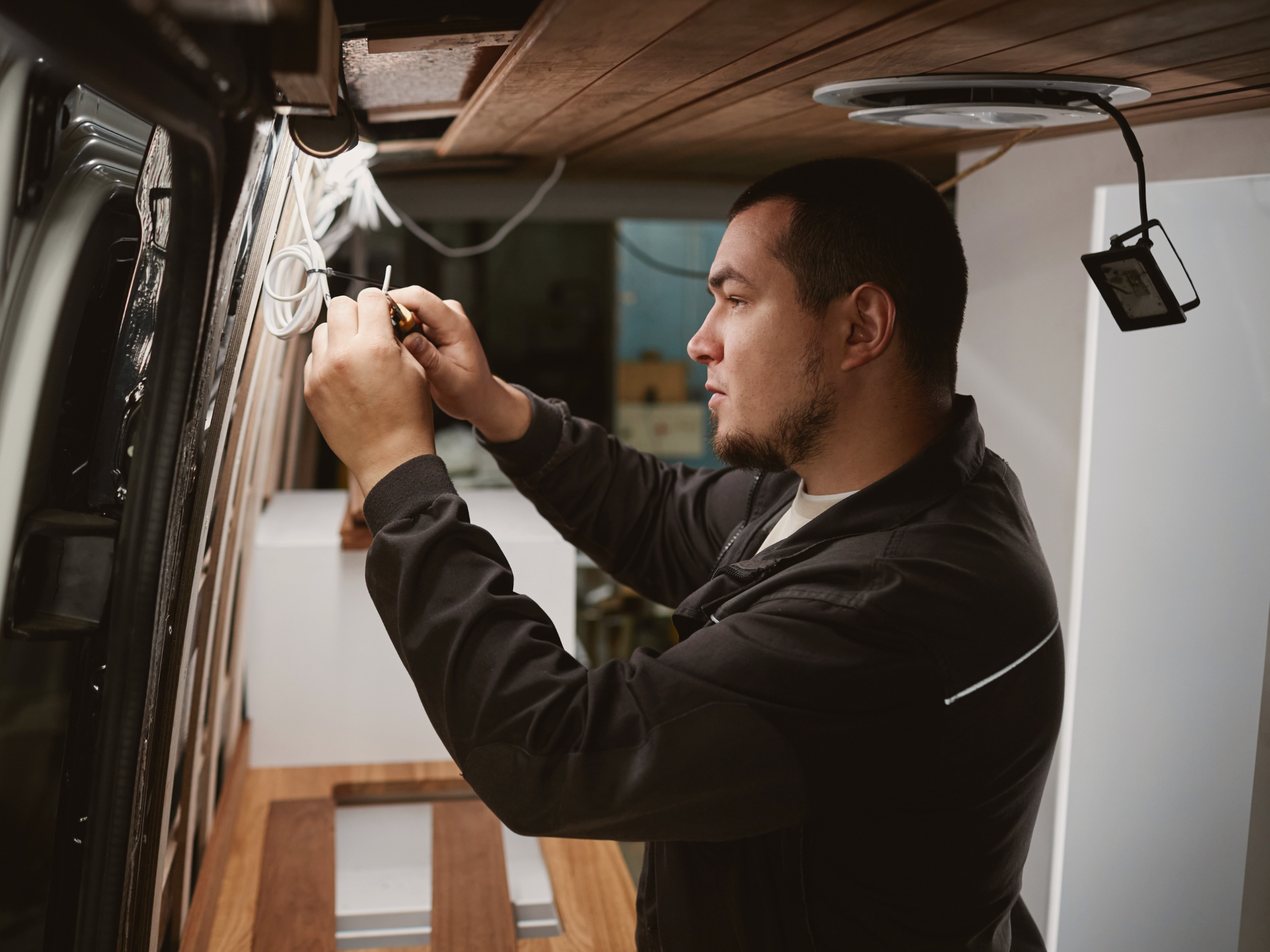
Safety Precautions
The main safety precautions you need to consider when wiring your camper van’s electrical system are wire size and fuse size. Wire that is too small will catch fire. Incorrectly sized fuses, or fuses placed at the wrong distance from the batteries, will overheat and melt before they can do their job (which is to interrupt the flow of current to prevent damage to electronics in the event of a surge or short.)
Lithium Ion Battery Safety
There is a lot of misinformation about the safety of lithium-ion batteries floating around on the internet. In a correctly installed and properly wired system, they are no more likely to catch fire than lead acid batteries.
In addition, lithium-ion batteries do not expel toxic gases, making them generally safer than lead-acid batteries.
Maintenance
These days, LifePro4 (lithium-ion) batteries are maintenance-free. AGM battery setups are also pretty much maintenance-free (although you should keep the batteries topped up to extend the life of their usable capacity.)
Older lead-acid batteries require some maintenance. They contain distilled water that needs to be topped up occasionally, as it will boil away during use.
Solar panels require little to no maintenance apart from regular cleaning. Dirty solar panels perform less efficiently than clean ones, especially in less-than-ideal (cloudy) conditions.
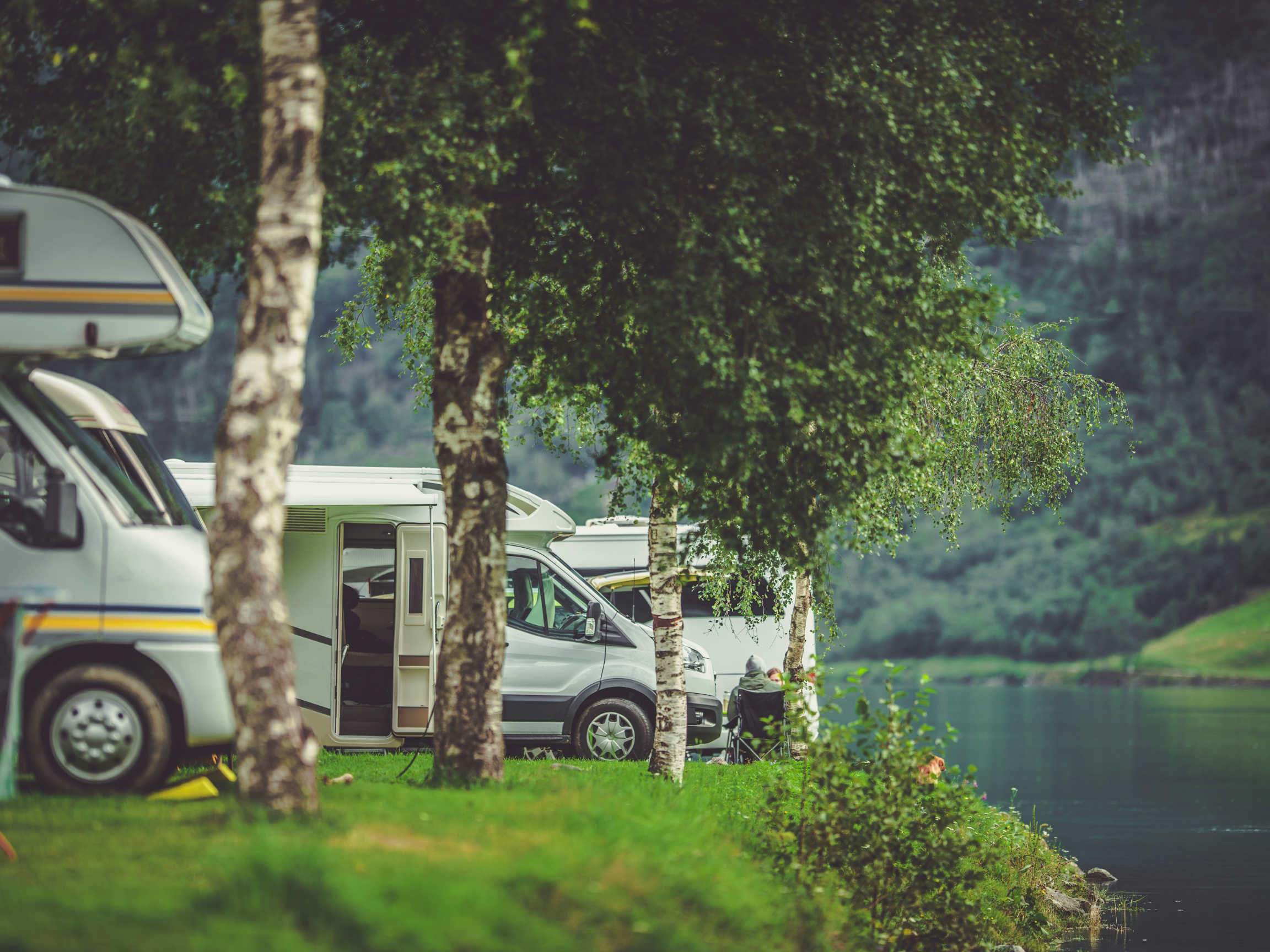
Alternatives to Sustainable Power Sources
If solar isn’t an option for your camper van batteries, there are other ways of powering your electrical systems. Besides shore power, the most common power source outside solar is a generator.
How Generators Work
A generator turns mechanical energy into electrical energy. An engine, which is powered by gasoline, diesel, propane, or some other natural gas, turns magnets inside an alternator, which creates alternating current.
A generator can provide power in one of two ways: it either outputs AC power directly, or it outputs DC power that can be used to charge batteries. These days, most people use AC generators in their campervan electrical systems.
Why Generators Are Not the Preferred Choice
Running a generator is noisy. It is essentially an engine, and running it is similar to running your vehicle’s motor. This may not seem so bad the first time you do it, but sitting in your van listening to a motor run for hours on end gets old quickly (take it from us.)
On top of that, a generator relies on gasoline or other non-renewable fuel sources to run. This not only gets costly, it means you have to store fuel (in addition to storing the generator itself), and also has a negative environmental impact.
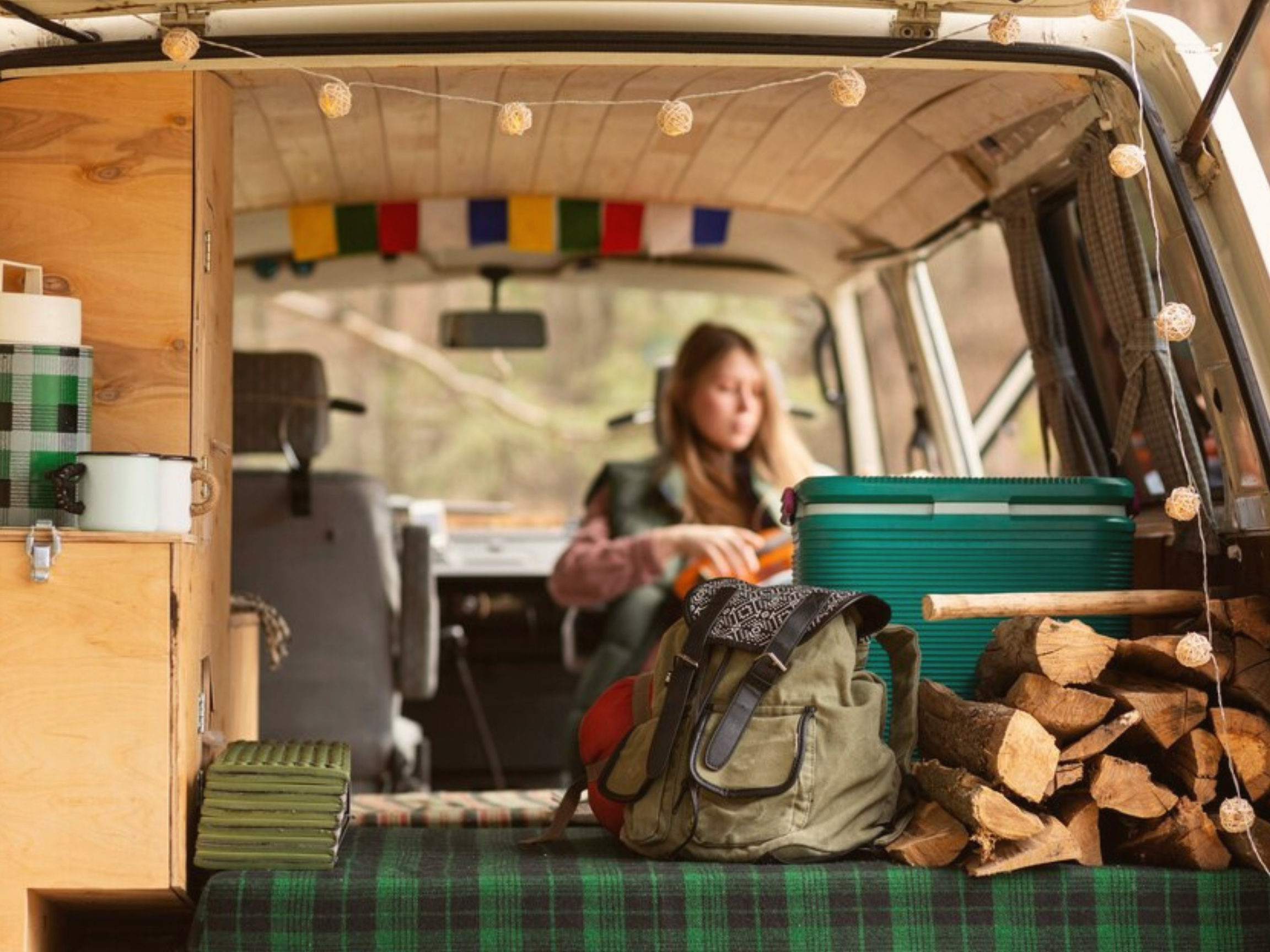
Managing Your Power Consumption
Even with a fully wired solar system and a good electrical setup, paying attention to how much electricity you use is a good idea. Here are some tips for conserving energy in your van.
LED Lighting
LED lights these days are cheap and plentiful. There is no need for any other type of light in your van.
Energy-Efficient Appliances
Choose energy-efficient appliances whenever you can. Additionally, anything that can be run directly off DC should be run off DC because converting between DC and AC current will always mean losing some power.
Unfortunately, while there are some DC appliances on the market (small refrigerators, for example), most appliances run on AC power.
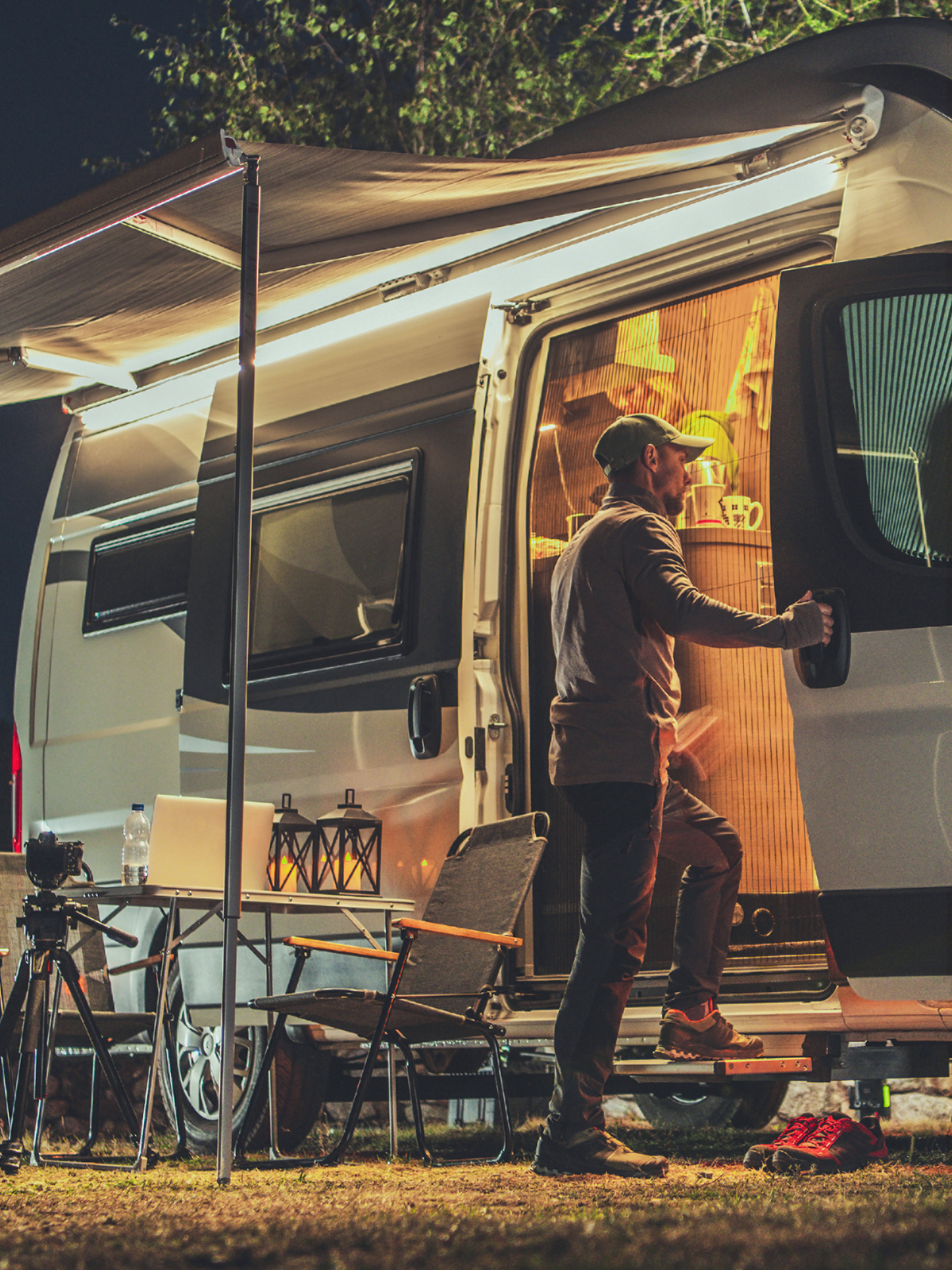
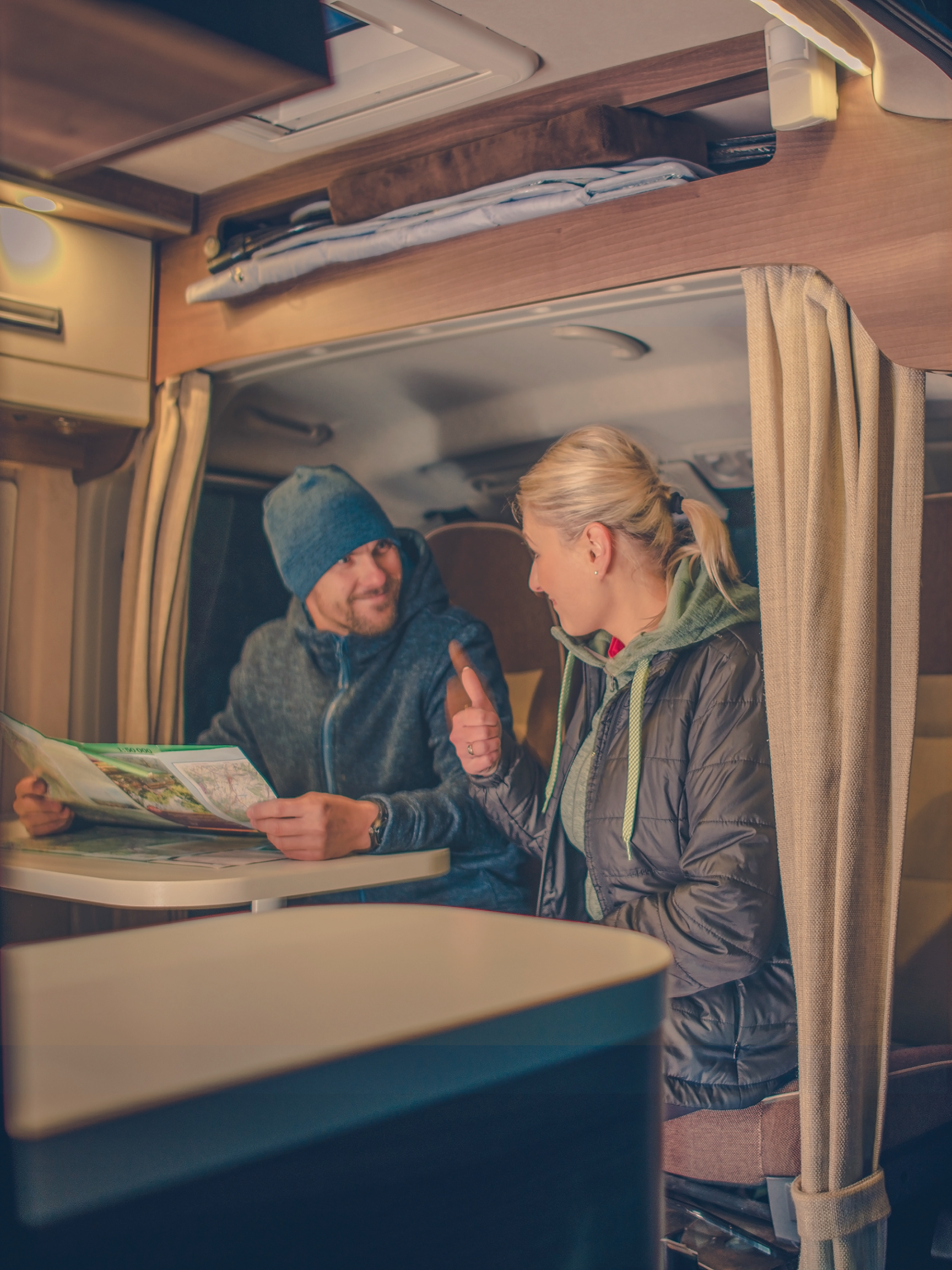
Understanding Your Energy Needs
Before you can begin building your electric system, you’ll need to calculate your energy consumption and power draw.
Calculating Your Daily AC Power Usage
In order to calculate your energy needs, you’ll need to understand how many amp hours you use per day. This is pretty easy to do: most appliances and devices have an amp hour rating provided by the manufacturer. If you don’t have the manual for the appliance, you can usually look up the rating online.
Do an audit of your entire van electrical system, adding up the amp hours drawn by all of the appliances, power tools, and devices you use. You can write the numbers down in a spreadsheet, or use a handy online calculator like this one to help you.
Sizing Your Electrical System
Once you understand how many amp hours you consume in one day, you can figure out how large a battery bank you will need. Ideally, you want a bank large enough to power your devices for a couple of days at a time, in case you can’t put more power in (e.g., it’s cloudy or you ran out of gas for your generator.)
Once you know how large a battery bank you need, you can figure out how many solar panels you’ll need to keep your camper van’s batteries topped up. Ideally, you would output as much energy from the panels as you consume. So if all your electronics combined consume 150 amp hours over the course of 6 hours, you’d want your solar panels to put out 25 amps per hour to keep up.
To create that 25 amps per hour, you’ll need a certain number of watts. Since the solar panels are putting 12 volts into the batteries, you can multiply the number of amps per hour needed by 12 to get the number of watts you need for the panel (in this case, 300w.)
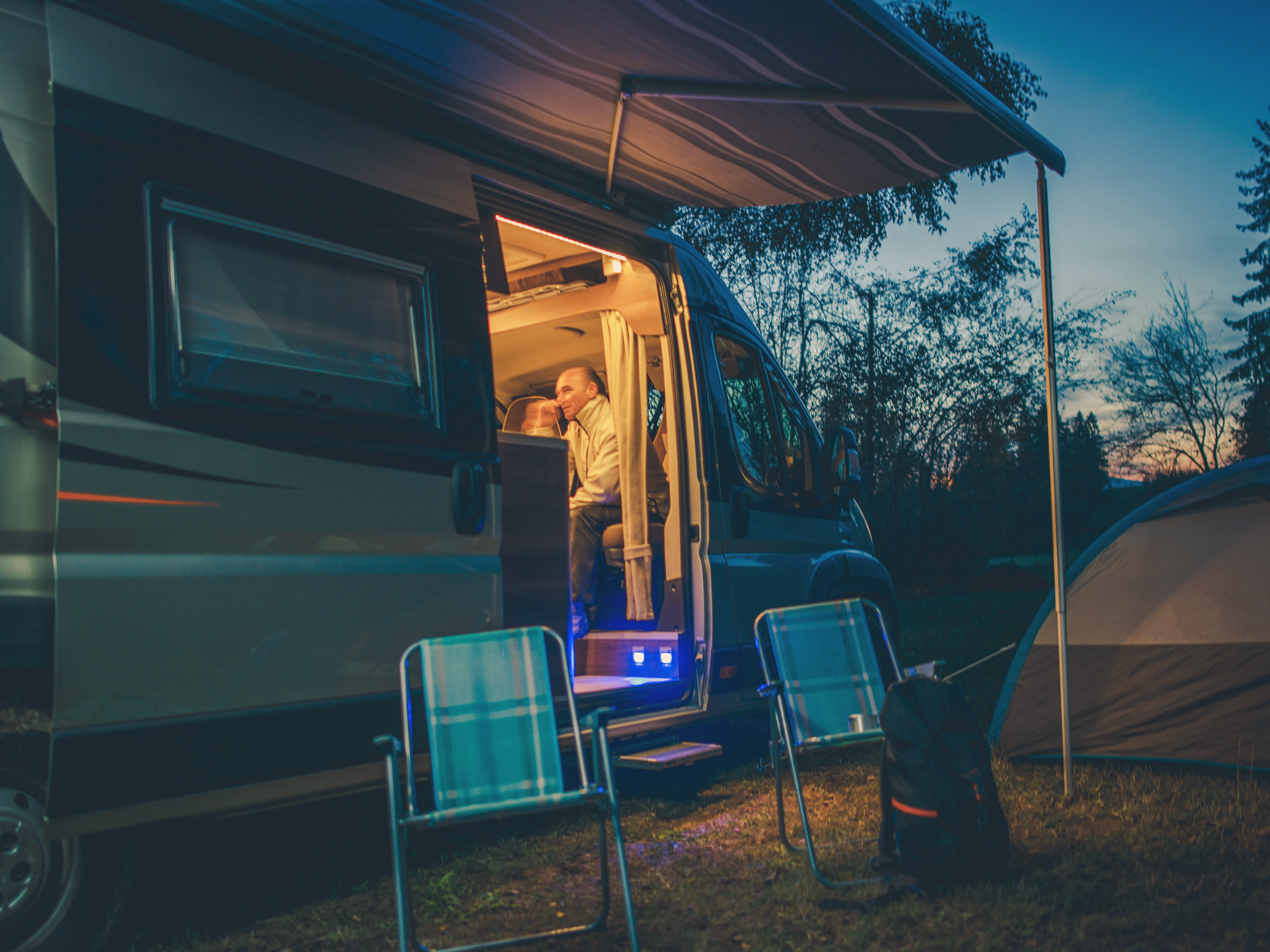
Conclusion
To sum up, portable solutions are a nice backup if you spend most of your time hooked up to shore power, but if you plan to spend a lot of time off-grid, you’ll need a permanently wired solution to provide AC electricity to your van.
You can achieve this through the use of either mounted solar panels or a gas-powered generator, plus a house battery bank. Before building your system, audit your camper to determine how much power you need and size your battery bank and solar panels accordingly.
When DIYing your own electrical system, wire and fuse size are the primary safety concerns. As far as maintenance goes, most lithium batteries and even AGMs require no maintenance and are perfectly safe.
Finally, opt for sustainability wherever you can. You may carry a generator as a backup power source, but ideally, you should be able to rely on your solar to power all your electrical components.
Wiring up your camper van’s electrical system can feel daunting, but with some research, you can learn how to build a safe, reliable, and environmentally friendly system that saves you money and provides all the power you need.


